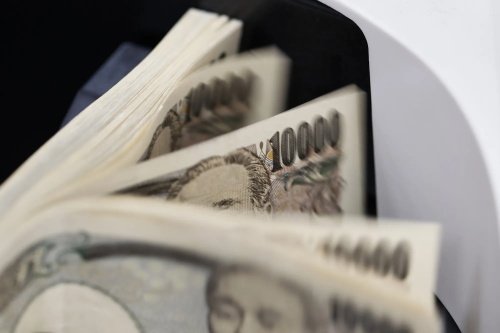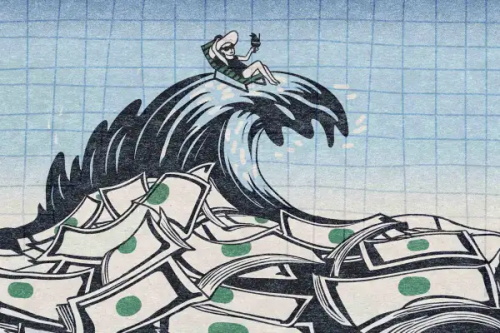Japan’s Yen Intervention: Desperate Move or Strategic Masterstroke?

In 2024, the Japanese yen plummeted against the U.S. dollar, hitting its lowest level in decades. This sharp depreciation has put enormous pressure on both the Japanese government and the central bank: while exporters are quietly celebrating, domestic consumers are suffering. The cost of imported goods has surged, living expenses are soaring, and even the Japanese stock market has been rattled by the currency’s slide. For a currency once regarded as a “safe haven,” the yen’s current predicament is a far cry from its former glory. The Japanese government eventually stepped in to intervene in the foreign exchange market—but was this a brilliant strategic move, or a desperate last-ditch gamble?
Why Is the Yen Falling?
On the surface, a key driver behind the yen’s decline is simply the strength of the U.S. dollar. Since the Federal Reserve began its aggressive rate-hike cycle, interest rates in the U.S. have surged far ahead of Japan’s. The Bank of Japan, on the other hand, has long maintained ultra-low interest rates, even implementing negative rates at times. This has led to significant capital outflows from Japan, as investors favor higher-yielding assets like the U.S. dollar, resulting in widespread yen selling.
But the underlying issues go far beyond interest rate differentials. Japan’s economic fundamentals have also been undermining confidence in the yen. Although Japan still ranks as the world’s third-largest economy by nominal GDP, the value of its output has declined in dollar terms due to the weakening yen. In 2024, Japan’s dollar-based GDP contracted further—largely due to the yen’s depreciation.
At the same time, domestic inflation is rising. Living costs are increasing, but wages have seen little meaningful growth, leading to declining real purchasing power. This combination of wage stagnation and imported inflation is weakening consumer confidence and fueling “sticky” inflation.
Widening Trade Deficit and Weakening Yen Demand
Looking at the balance of payments, Japan recorded a trade deficit of ¥5.4 trillion in 2024. This wasn’t just the result of increased import costs—it also pointed to long-standing structural challenges within the economy.
Since the 2011 Fukushima disaster, Japan has shut down many of its nuclear power plants and now relies heavily on imported oil and natural gas. In recent years, soaring energy prices—coupled with a weakening yen—have pushed up import costs dramatically. Although exports reached record highs in 2024, imports rose even faster, leaving the overall trade balance in the red. In other words, Japan is spending more yen abroad than it’s earning—reducing international demand for the currency.
To make matters worse, Japan’s productivity growth remains sluggish, and its domestic market lacks vitality. This has entrenched a long-term dependence on imported goods, creating what could be called an “invisible demand trap.”
Carry Trades Accelerate Yen Selling
In addition to structural macroeconomic issues, financial market dynamics are also weighing heavily on the yen. Thanks to persistently low interest rates—often negative—many global investors engage in carry trades, borrowing yen to invest in higher-yielding dollar assets. This means constant “selling yen, buying dollars” activity in the market, putting further downward pressure on the currency.
As long as interest rate differentials persist and the logic behind carry trades remains unchanged, any rebound in the yen is likely to be fleeting.
Government Intervention: Limited Effect?
Faced with rapid yen depreciation, the Bank of Japan made a historic policy shift in early 2025—ending eight years of negative interest rates and raising the benchmark rate from -0.1% to a range of 0% to 0.1%. It was the first rate hike since 2007, signaling a move toward policy normalization.
This led to a brief strengthening of the yen. However, markets remained skeptical, focusing instead on “what comes next.” Especially with the Trump administration hiking tariffs again, the Bank of Japan lowered its economic growth forecasts—suggesting that future rate hikes would be cautious, or even delayed again.
Japan also intervened directly in the forex market by selling dollars and buying yen in an attempt to halt further depreciation. But the currency market is no longer a place where unilateral actions can easily control outcomes. As long as the U.S.-Japan interest rate gap persists, Japan’s solo interventions may prove to be little more than a symbolic gesture.
Moreover, Japan does not operate in a vacuum in the international financial system. As a close ally of the United States, Tokyo faces certain constraints in its currency maneuvers. Some analysts even suggest that the U.S. has explicitly warned Japan against using its dollar reserves held in the U.S. to hedge exchange rate risks. This kind of “strategic asymmetry” weakens Japan’s position and limits the effectiveness of its interventions.
The Yen’s Future: All About Policy Divergence
At first glance, the yen’s exchange rate reflects economic fundamentals, but in reality, it is even more influenced by the relative strength of monetary policies between Japan and the U.S. If the Fed maintains high interest rates while Japan’s rate hikes stall, investor pessimism about the yen is unlikely to change.
Of course, if the global economy unexpectedly slows and the Fed is forced to pivot, Japan might seize that window to push forward with rate hikes and structural reforms—only then could the yen potentially stabilize and rebound.
Until then, Japan’s interventions may only treat the symptoms, not the root causes.
The yen’s weakness is not the result of any one policy misstep—it is the culmination of long-standing structural challenges, shifting global financial dynamics, and policy divergence. While Japan’s exchange rate intervention appears bold and decisive, it carries enormous policy costs and external limitations. Whether it was a well-calculated strike or a desperate gamble is something only time will reveal.
For now, every interest rate adjustment and every yen-buying operation by the Bank of Japan sends ripples through global markets. In the end, the yen’s long-term stability will hinge on how effectively Japan can revitalize its domestic economy and address underlying structural weaknesses.



